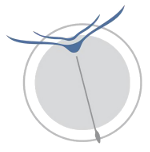Pathogens take wings: disease transmission in migratory birds along the Palearctic-African flyway
Over the past two decades there has been a dramatic resurgence of epidemic arboviral and other zoonotic
diseases affecting both humans and domestic animals. Migratory birds play a critical role in spreading such
diseases, notably avian influenza viruses (AIV), West Nile virus (WNV) and Newcastle disease virus
(NDV). Stopover sites on migration pathways can serve as pathogen transmission hot spots. We propose to
investigate pathogen transmission and transport in a multi-host, multi-pathogen migratory-resident system,
focused on a critical stopover site, in Israel, funneling migratory birds through a bottleneck in the Palearctic-
African flyway. The general aim of the proposal is to obtain a clearer understanding of how migration
impacts the evolutionary ecology of hosts and pathogens within migratory host populations and also within a
multispecies host community residing in an area ephemerally used by several migratory populations. We
propose to meet these aims by tagging and telemetrically tracking the movement of nine migrating species
that breed in a Palearctic region, overwinter in an African region and spend time in Israel when flying
between these regions. Individuals of these nine species along with non-tracked individuals from four other
migrating species will be sampled intensively and systematically within Israel. Comparisons between
resident and migratory subpopulations will be conducted on seven of the focal species and tagged migratory
species will be sampled opportunistically in their breeding and overwinter grounds. The physiological,
immunological and pathogen-infected states of these individuals will be recorded and assessed, where the
pathogens include WNV, AIV, NDV and several bacterial species of zoonotic interest. These individual-state
data, along with high resolution movement and pathogen strain genetic data will be analyzed to assess
relationships that may help explain observed timing, intensity and spread of diseases within and beyond
Israel. We also plan to develop an agent-based general modeling framework that can be used to assess
causative relationships among correlated variables and apply these models to predict responses of these
disease systems to both land use practices and global change.
diseases affecting both humans and domestic animals. Migratory birds play a critical role in spreading such
diseases, notably avian influenza viruses (AIV), West Nile virus (WNV) and Newcastle disease virus
(NDV). Stopover sites on migration pathways can serve as pathogen transmission hot spots. We propose to
investigate pathogen transmission and transport in a multi-host, multi-pathogen migratory-resident system,
focused on a critical stopover site, in Israel, funneling migratory birds through a bottleneck in the Palearctic-
African flyway. The general aim of the proposal is to obtain a clearer understanding of how migration
impacts the evolutionary ecology of hosts and pathogens within migratory host populations and also within a
multispecies host community residing in an area ephemerally used by several migratory populations. We
propose to meet these aims by tagging and telemetrically tracking the movement of nine migrating species
that breed in a Palearctic region, overwinter in an African region and spend time in Israel when flying
between these regions. Individuals of these nine species along with non-tracked individuals from four other
migrating species will be sampled intensively and systematically within Israel. Comparisons between
resident and migratory subpopulations will be conducted on seven of the focal species and tagged migratory
species will be sampled opportunistically in their breeding and overwinter grounds. The physiological,
immunological and pathogen-infected states of these individuals will be recorded and assessed, where the
pathogens include WNV, AIV, NDV and several bacterial species of zoonotic interest. These individual-state
data, along with high resolution movement and pathogen strain genetic data will be analyzed to assess
relationships that may help explain observed timing, intensity and spread of diseases within and beyond
Israel. We also plan to develop an agent-based general modeling framework that can be used to assess
causative relationships among correlated variables and apply these models to predict responses of these
disease systems to both land use practices and global change.
Status:
Currently In Progress



